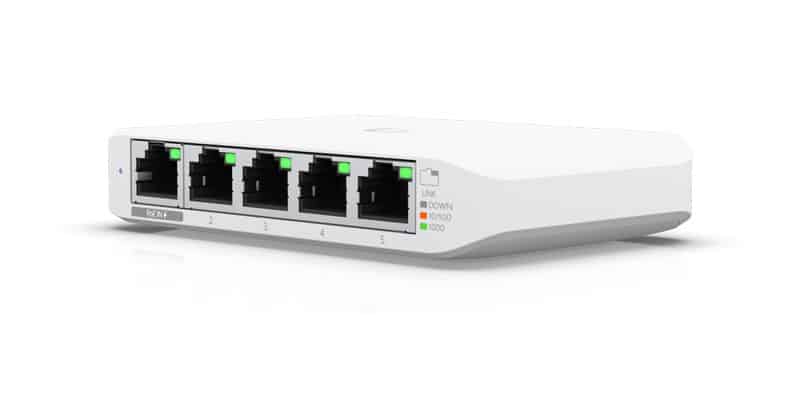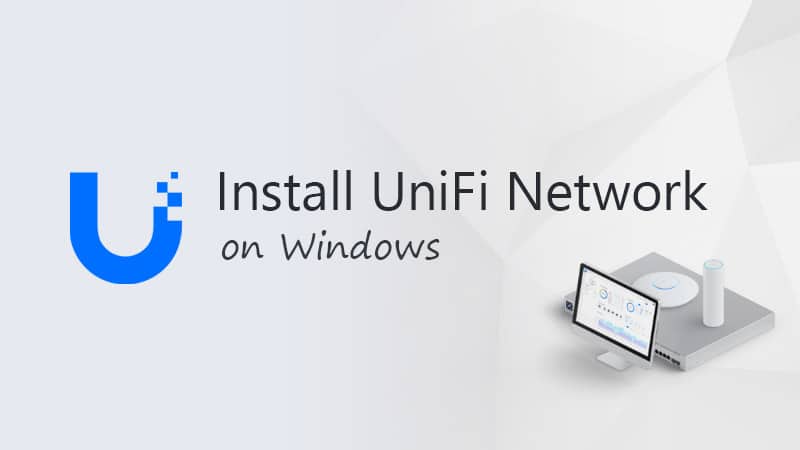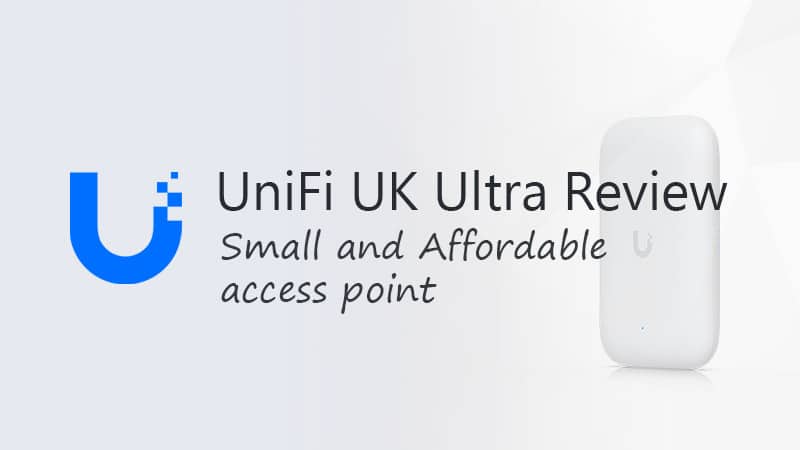Do you need to expand your home network? A network switch allows you to connect multiple devices to the same ethernet cable. But what is the best switch for your home network? With more than 20 years of experience in IT, I am going to help you choose the correct switch.
Which switch you need depends a bit on whether you want to fully control (manage) the switch, or simply want a dumb switch. Also, do you need (or have) Power over Ethernet, or not?
In this article
In this article, I have listed the best switches for your home network.
Home Network Switches
Before we are going to look at the different home network switches, let’s first take a look at what to look for when choosing a new network switch. We also need to know where you want to use the switch because that really determines which switch you should get.
The first decision you need to make is if you want a managed or unmanaged switch. With a managed switch you can configure each port of the switch, assign VLANs, do port mirroring, etc. Managed switches are more expensive and not always necessary.
If you simply want to connect more devices to the same ethernet cable, then an unmanaged switch is more than enough.

The other option that you will need to think about is Power over Ethernet (PoE). With PoE, you can use a single ethernet cable to power and connect a device. This is particularly handy with access points or network cameras.
The last point to consider is the number of network ports. You can buy switches with 5 up to 48 network ports. Switches with 24 or 48 ports are commonly used in enterprise environments, for home networks is 5 or 8 ports more common. Keep in mind that you have to use 1 port to connect the switch to your network!
Best Switches for Home
Below you will find the best switches for your home network that you can buy.
Netgear GS305 – 5 Port
- 5 Gigabit Ethernet ports
- Simple plug-and-play setup with no software to install or configuration needed
NETGEAR was my go-to brand for network equipment before I switched over to the UniFi platform. If you need a simple, reliable, plug-and-play switch, then the GS30x line of NETGEAR is a good choice.
This switch comes with only 5 ports, allowing you to connect 4 devices to it (1 port is needed for the uplink to your router). If you need more connection, then check out the 8-port or 16-port version of this switch.
All ports are 1Gbit, which is more than enough for a home network. The only downside is that this model doesn’t have any PoE ports that you can use. Also, a plus point is that the switch has a fanless design, meaning that it won’t make any noise and it’s also energy efficient.
Pros
- Simple plug-and-play setup
- Supports desktop or wall mount placement
- Energy-efficient design compliant with IEEE802.3az
Cons
- Limited to five ports
- No PoE support
For this price that it costs, this is really a simple but great switch if you need to expand your network with only a couple of devices. NETGEAR products are really reliable and have never let me down in the past.
UniFi Switch Flex Mini
This small switch from UniFi is also a great option when you are looking for a simple switch to expand your network. You will get the most value out of this switch when you already have other UniFi network gear, but even without it, it’s still a great 5-port switch.
One of the advantages of the UniFi network gear is that you can easily manage it with the UniFi controller. The controller gives you a lot of insight into your network, allows you to easily make changes, and makes sure that everything stays up-to-date.
The switch can be powered with PoE or by using the supplied 5V USB-C adapter. Good to know is that the switch doesn’t offer PoE, so you can’t use it to power and connect your access point for example.
Pros
- Compact size
- Easy to manage and configure
- Powered with PoE or USB-C
Cons
- Limited to 5 ports
- Can get a bit warm
The UniFi Flex Mini is a great switch to quickly extend your network. But if you don’t have any other UniFi products and also don’t plan to buy them, then it makes more sense to buy the NETGEAR switch.
TP-Link TL-SG108 – 8 Port
- 𝗢𝗻𝗲 𝗦𝘄𝗶𝘁𝗰𝗵 𝗠𝗮𝗱𝗲 𝘁𝗼 𝗘𝘅𝗽𝗮𝗻𝗱 𝗡𝗲𝘁𝘄𝗼𝗿𝗸: 8× 10/100/1000Mbps RJ45 Ports supporting Auto Negotiation and Auto MDI/MDIX, Plug and play, no configuration needed
- 𝗚𝗶𝗴𝗮𝗯𝗶𝘁 𝘁𝗵𝗮𝘁 𝗦𝗮𝘃𝗲𝘀 𝗘𝗻𝗲𝗿𝗴𝘆: Latest innovative energy-efficient technology greatly expands your network capacity with much less power consumption and helps save money, Dimensions ( W x D x H ) – 6.2 x 4.0 x 1.0 in.(158 x 101 x 25 mm)
The TP-Link TL-SG108 is really an affordable 8-port switch for your home network. One the great options of this switch is that it comes with built-in QoS (quality of service) and IGMP Snooping. These two features make sure that priority traffic, like VoIP calls or video meetings, go first on the network.
The switch is easy to use, just plug-and-play, with no software required. Its energy-efficient design can save up to 72% on power consumption, making it an environmentally-friendly option. The sturdy metal construction adds to its durability.
Pros
- Affordable price
- Energy-efficient
- Supports IEEE 802.1p QoS, ensuring high-quality data transfer
Cons
- No PoE support
Switches with Power over Ethernet
When you want to connect access points, network cameras, or other PoE-capable devices to a switch, then you will need a network switch that comes with PoE ports. The advantage of using PoE is that you only need to run a single ethernet cable to the device.
Listed below you will find the best switches for home networks with PoE ports.
NETGEAR 8 Port PoE GS308EP
- 8 Gigabit Ethernet ports
- 8 PoE ports with 62W total power budget
- Plus software with easy-to-use interface offers basic managed capabilities to configure, secure, and monitor your network
This NETGEAR switch is really a powerful and versatile switch. It has 8 PoE Gigabit ethernet ports, and it is manageable. This means that you can configure VLANs, QoS (determine which traffic has priority), and per-port settings.
When it comes to PoE it’s important to know how many watts you need. A single access point, and/or a network camera won’t be a problem. But the total power budget of the switch is 62W. This means that all PoE devices combined can’t use more than 62W.
If you are looking for a single switch that also has PoE ports, then this NETGEAR switch is a great option.
Pros
- 8 PoE ports
- Basic management functions
- Fanless
Cons
- The power brick is large
UniFi Switch Lite 8 PoE
- (8) Gigabit RJ45 ports including (4) 802.3at PoE+ ports
- Managed by UniFi Controller (5.13.10 or later)
- External 60W power adapter
- Wall-mountable (Kit included)
The UniFi Lite 8 PoE is an 8-port, Layer 2 PoE switch with silent fanless cooling. It comes with 4 normal Gigabit Ethernet ports and 4 PoE+ ports. This switch is perfect when you need to extend your network and are also planning to connect an access point to it for example.
The fanless design makes sure that you can’t hear the switch, but as a result, it can get a bit warm. I was a bit surprised that you don’t see any ventilation openings in the switch, but it works.
One of the advantages of the UniFi network gear is that you can easily manage it with the UniFi controller. The controller gives you a lot of insight into your network, allows you to easily make changes, and makes sure that everything stays up-to-date.
Pros
- Easy to set up and manage
- Provides reliable performance
- Features a fanless design for quiet operation
- Offers a compact and sleek design
Cons
- Wallmount design could be done better. It’s hard to get the switch of it again.
TP-Link TL-SG1005P
The TP-Link TL-SG1005P is a 5-port Gigabit PoE switch that has received a lot of positive reviews from other customers. One of the main advantages of this switch is its affordable price, making it a great option for home networks. The switch is also easy to set up and use, with no software required.
It comes with power over Ethernet (PoE) functionality, which allows it to power devices like IP cameras or wireless access points. The switch can supply up to 30W per port, making it suitable for a wide range of PoE devices. The total power budget is 65W.
Pros
- Affordable price
- Easy to set up and use, no software required
- Can supply up to 30W per port
Cons
- Can get warm with extended use, which may affect performance
Wrapping Up
When it comes to choosing a network switch for your home network, you can’t really go wrong with the 3 brands managed in this article. If you are looking for a switch with more ports, then Netgear and UniFi are both great options.
Make sure that you also read this article about best practices for your home network.
I hope this article helped you with choosing the best switches for your home network. If you have any questions, just drop a comment below.










